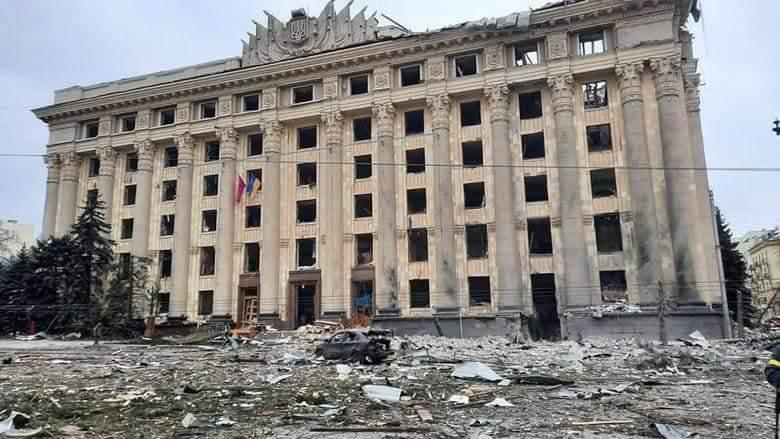Media
Part I: Crimea was not a civil war: A reflection on the current invasion
clary estes
Apr 13, 2022
“My first trip to Ukraine was in 2012,” said Andy. “I really enjoyed my time there. I thought this was a country that had stopped in time. Yet, in the last 10 years, I noticed a difference. Things had started to move prior to the invasion.”
In Part I Andy recalls his initial experiences traveling to Ukraine, and the development he saw over the years following his first trip. He also discusses the differences within the country, particularly around Kharkiv following the Maidan Revolution (also known as The Revolution of Dignity) in 2014, which led to the Russian invasion of Crimea and the launch of the hybrid war in Donbas, the Southeastern-most region of Ukraine.
“My second trip was around 2015, the year after the Crimea invasion. I had gone to Kharkiv, a city I am very familiar with, and there seemed to be a lot of new changes: replaced roads, rebuilt parks, and generally a lot of refurbishing of the buildings and renewing the downtown area. My second trip was also when I really got introduced to what was really happening in Eastern Ukraine.
“The way I remember Crimea being presented in the United States was that it was some sort of civil war and that there was a dispute within Ukraine that caused this uprising in the area. Honestly, the longer I was there, the more I started to believe this wasn't at all true. I started asking questions and the local people in Kharkiv just responded, ‘There is no civil war. This is a war between Russia and Ukraine.’ It didn't really make sense to me. How could there be a war between Russia and Ukraine when we're sitting 40 kilometers from Belgorod and 25-ish kilometers from the Russian border? So what is actually going on here?”
The easternmost regions of Ukraine maintain close historic and cultural ties to Russia, and due to Kharkiv’s close proximity to the Russian border, this city is no exception. Despite their Ukrainian identity, the majority of people in Kharkiv and the surrounding communities speak Russian as their native language, many are ethnic Russians themselves, or at least have familial ties to Russia.
Even after Russia started the war in 2014 and relations between Ukraine and Russia soured, many people in Kharkiv continued to be friendly with their Russian neighbors. But after Russia annexed Crimea and supported pro-Russian separatists in Donbas, this was not the case for all Ukrainian citizens living in Kharkiv. Many were from Crimea and Donetsk and Luhansk, the regions that make up Donbas, and had to move to different parts of Ukraine.
Andy recalled a conversation he had with a man who was born in Sevastopol, had grown up in Crimea, and who eventually had to relocate to Kharkiv after the Russian invasion. According to Andy, the man said: “We didn't want this. We just woke up one morning and there were soldiers in our city, wearing black uniforms, and saying, ‘This is ours.’ And nobody really knew where they came from. Obviously, they weren't local.”
Andy explained, “Locals could tell by the Russian the soldiers were speaking. Ukrainians, even Russian-speaking Ukrainians, don't speak Moscow Russian or ‘real Russian.’ They have a lot of Surzhyk in their speech — a mixture of Russian and Ukrainian. They can tell right away if someone is not from the area, which is when they think, ‘These aren't our people. They're not from here.’ So when the Crimean invasion happened, this guy packed up his family and left and came to Kharkiv. It took him a couple of years to be able to get his mother and father out as well. But he never thought another war would happen. He never thought that he would have to move again as a result of another Russian invasion.”
The narrative was that Ukraine was dealing with an internal conflict, with government forces fighting against pro-Russian Ukrainian separatists; the reality was that Russian forces had been deployed to Crimea and Donbas.
The story of the man from Crimea aligns with what is known as the Battle of Ilovaisk, which took place in the late summer of 2014. This battle was a turning point in the initial war in Eastern Ukraine, in that it showed the Russian strategy of sending military troops into Ukraine and then denying involvement. According to the U.S.-Ukraine Foundation, in Ilovaisk “Ukrainian soldiers began reporting that they were seeing regular Russian army troops among the separatist fighters. It was evident that despite the Kremlin’s denial of any involvement the remaining government forces were being encircled as a direct result of this Russian reinforcement of the separatist fighters.”
Much like the men in the black uniforms that appeared in Sevastopol, in Ilovaisk irregular Russian forces wore Ukrainian military uniforms in order to confuse Ukrainian soldiers. The ruse only went so far. Ukrainian commanders could tell these men were not Ukrainians; they intercepted conversations and radio messages and could tell by their Saint Petersburg dialects that they were not Ukrainian, as reported by the U.S.-Ukraine Foundation. The Russian government continued to deny any military involvement in Donbas and Crimea up until it launched its invasion of Ukraine on February 24th.
Though much larger in scale, the recent invasion of Ukraine is nothing new, as Russian troops have been operating in the country since 2014.
Next is Part II: The (literal) cost of war



